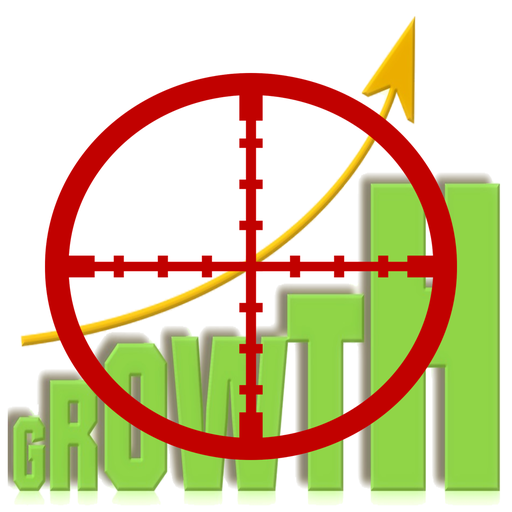Did you know that while over 51% of companies use marketing automation software, nearly 40% see disappointing results due to preventable errors? In today’s digital marketing landscape, a single misstep with your automation tool or platform can seriously damage your ROI, disrupt your sales team, and hurt the customer journey. This guide uncovers the most common automation pitfalls and teaches you how to unlock the full power of your marketing automation strategy—optimizing for efficiency, personalization, and outstanding customer experience.
Why Marketing Automation Oversights Can Derail Your Success
Did you know that over 51% of companies currently use marketing automation software, yet nearly 40% report poor results due to avoidable mistakes? Discover how marketing automation, when mismanaged, can undermine your entire digital marketing strategy and damage the customer journey.

Marketing automation oversights can ripple throughout your organization, often with consequences that go far beyond a single failed marketing campaign. Poor data management, lack of alignment between your sales team and your marketing team, and underutilized automation tools leave businesses vulnerable to wasted resources and missed opportunities. In many organizations, these errors occur silently, only revealing themselves after significant loss in ROI or negative impact on customer experience becomes evident.
From a dropped lead on a landing page to an email marketing campaign sent to the wrong audience, automation software misfires quickly accumulate. As digital marketing matures, customers expect seamless, personalized experiences across multiple channels. Missteps with your marketing automation platform do not just affect workflow—they shape, and sometimes shatter, the entire customer journey. Understanding and avoiding these pitfalls is the first step toward driving consistent, measurable business growth.
Unlock the Power of Marketing Automation: Know What You'll Learn
Identify the most common marketing automation errors
Discover how to optimize marketing automation software and platforms
Explore best practices for automation tool setup
Enhance your sales team results and customer experience
Master effective digital marketing with automation tools
Defining Marketing Automation: Key Concepts and Benefits
What is Marketing Automation?
Role of marketing automation software in modern marketing
Difference between marketing automation platform vs. automation tool
Integration with email marketing, CRM, and digital marketing

Marketing automation is the process of using specialized software platforms to automate repetitive tasks—think emails, social media posts, or landing page follow-ups—across marketing channels. At its core, an automation tool takes over routine tasks so your marketing team can focus on strategic activities. The distinction between a marketing automation platform and an individual automation tool lies in scale and integration: while a single tool may handle a specific channel (e.g., email marketing), a platform orchestrates the entire digital marketing process, tying together CRM, campaigns, analytics, and more.
For instance, market leaders like Marketo Engage and Salesforce Marketing Cloud deliver robust marketing automation solutions that connect your workflows with sales team efforts. Modern automation software can nurture leads across landing pages, trigger messages based on real-time customer journey data, and collect insights that inform not just marketing, but also sales and service efforts. When automation platforms are set up correctly, they allow businesses to scale, diversify, and customize the experience throughout the digital landscape.
Benefits of Marketing Automation for Businesses
Streamlining marketing campaigns
Improving the customer journey and targeting
Enhancing the effectiveness of the sales team
Properly implemented, marketing automation tools streamline your marketing campaigns, enabling you to automatically segment audiences, deliver targeted content, and coordinate across channels efficiently. This sophistication means better targeting at every stage of the marketing funnel, supporting not just one-off campaigns, but an ongoing, engaging customer journey.
“Marketing automation is not just a tool—it’s a digital strategy.” – Industry Expert
By automating routine marketing tasks, companies reduce manual labor, freeing up their marketing team to focus on creativity and high-impact projects. Automation software further empowers the sales team with valuable insights, such as which leads are most engaged, making lead nurturing and conversion efforts both effective and efficient. Ultimately, when your marketing automation solution works in harmony with your CRM and digital strategy, your customer experience—and your bottom line—see marked improvement.
Top Marketing Automation Mistakes That Hurt ROI
Common Automation Software Errors Seen Across Industries
Poor data quality in marketing automation platforms
Sending untargeted email marketing campaigns
Neglecting customer experience in the automation process
Failure to customize messaging for each customer journey

Many businesses fall into the trap of trusting their automation platform or automation software without establishing clear data protocols. Inaccurate or outdated data leads to misdirected email marketing campaigns and irrelevant communications, which quickly disengage prospects and customers. Additionally, when the sales team is not in sync with marketing campaigns crafted via automation tools, vital follow-ups might be missed, causing a disconnect in the customer journey that undermines lead nurturing and conversion.
Another frequent error is treating the automation tool as a “set and forget” solution. Neglecting to continually refine customer experience strategies and relying on broad, untargeted messaging results in poor performance, low engagement, and wasted resources. Over time, a lack of personalization diminishes brand perception and frustrates your most valuable audiences. These unforced errors underscore the importance of ongoing optimization and close alignment between your marketing and sales teams.
To sustainably boost ROI, ensure each marketing campaign leverages up-to-date audience insights and is mapped to purposeful outcomes. When automation platforms are mismanaged, the effectiveness of your digital marketing efforts plummets, leading to outcomes far below industry benchmarks.
Over-Automating Marketing Campaigns
How excessive automation tools lead to impersonal outreach
Signs your sales team is missing out on authentic engagement
Over-automation is a common pitfall, where organizations use marketing automation tools so extensively that campaigns lose their human touch. Automated marketing, when left unchecked, may result in customers feeling like just another number in the database. Relying solely on predefined triggers without space for customization leads to impersonal communications, reduced customer engagement, and missed chances to build brand loyalty.
A telltale sign that your sales team is missing out on real connection is a drop in engagement metrics or negative feedback about robotic messaging. Even with the best automation software, failing to integrate genuine, personalized interactions into your digital marketing process undermines the customer journey and hampers the performance of your key marketing channels. Balance is essential—combine automation with thoughtful, human outreach for best results.
Comparison: Top Automation Platform Errors and Their Cost to ROI |
||
Error Type |
Example |
Impact on ROI |
|---|---|---|
Poor Data Quality |
Duplicate or outdated contact records in Marketo Engage |
Wasted spend, lost leads |
Over-Automation |
Sending generic automated emails to all segments |
Lower open/click-through rates, increased unsubscribes |
Lack of Integration |
Automation platform not syncing with CRM |
Broken customer journey, missed opportunities |
Neglecting Customer Experience |
Ignoring feedback from sales team and customers |
Reduced satisfaction, decreased repeat business |
How to Select the Right Marketing Automation Software
Key Features of Effective Marketing Automation Tools
Integration with CRM systems
Scalability and flexibility for various marketing campaigns
Usability for marketing and sales teams

Globally, marketing automation software spending is projected to reach $13.71 Billion by 2030. Choosing the right marketing automation software can transform your marketing and sales team’s productivity. Look for platforms that offer seamless integration with CRM systems—this helps unify data flows and ensures a consistent experience across the customer journey. Additionally, top-tier automation tools support scalability, so your solution can grow with your marketing process and serve diverse campaign needs across multiple channels.
Usability is also vital; marketing automation tools should cater to both the marketing team and the sales team with intuitive dashboards, easy setup, and robust support. Vendors like Marketo Engage, Salesforce Marketing Cloud, and HubSpot lead the way by enabling businesses to launch sophisticated campaigns while keeping the user experience front and center. When assessing a marketing automation platform, consider the flexibility of customization and how well it matches your team’s day-to-day workflow.
Comparing Leading Platforms: Marketo Engage, Salesforce Marketing Cloud, and More
Feature Comparison: Marketing Automation Platform Leaders |
|||
Platform |
CRM Integration |
Scalability |
Best For |
|---|---|---|---|
Marketo Engage |
Excellent |
Enterprise |
Lead nurturing, complex campaigns |
Salesforce Marketing Cloud |
Best-in-class |
Enterprise |
Omnichannel digital marketing |
HubSpot |
Strong |
SMB to Enterprise |
Ease of use, inbound marketing |
ActiveCampaign |
Good |
SMB |
Email marketing, automation on a budget |
“The right marketing automation tool doesn’t just automate—it elevates.”
Strategic Implementation: Avoiding Automation Pitfalls
Setting Up Your Marketing Automation Platform Correctly
Establishing clear goals and KPIs
Mapping the customer journey effectively
Ensuring marketing automation software is aligned with digital marketing objectives

Successful deployment of your marketing automation platform starts with defining measurable goals and KPIs. Decide what success looks like—whether it’s improved lead generation, better customer experience, or increased efficiency for your marketing team. Then, map out the ideal customer journey to identify key touchpoints for automated campaigns, ensuring your automation tool supports each stage in a meaningful way.
Align your automation solution with broader digital marketing strategies, so all teams (from social media to email marketing and the sales team) are moving in concert. Regular alignment meetings and feedback loops should be standard, ensuring the marketing automation software remains effective as your business needs evolve. By setting a clear foundation, you maximize ROI from your marketing automation investment and minimize costly mistakes.
Integrating actionable data sources, such as CRM and analytics dashboards, from the outset enables adaptive automation and smarter decisions. Teams that plan and monitor automation initiatives collaboratively are better equipped to identify risks early and sustain momentum.
Designing Customer-Centric Automation Workflows
Personalization strategies using marketing automation
Integrating feedback loops for optimal customer experience
Every marketing automation campaign should center on delivering a personalized experience . Use your automation platform to dynamically segment audiences, create custom messages, and adjust campaigns in real time based on customer behaviors. A customer-centric workflow doesn’t just send automated emails; it evolves with customer feedback and data insights.
By incorporating feedback loops where sales, service, and customers can share insights, you strengthen every touchpoint of the customer journey. Effective marketing automation solutions integrate surveys, ratings, or direct outreach into automated workflows, constantly refining the approach. This agility distinguishes brands that win with digital marketing and automation tools from those stuck on autopilot.
Continuous listening and refinement build an experience that not only converts prospects but delights them, leading to increased loyalty and higher lifetime value.
Training Your Sales Team on Automation Tools
Best practices for adoption
Common training mistakes and their solutions
Empowering your sales team with proper training on your chosen automation tool can make or break the effectiveness of your marketing automation platform. Common training errors—like one-size-fits-all sessions or neglecting updates—leave room for missed sales opportunities and workflow inefficiencies.
Best practice involves ongoing, hands-on training tailored to real-world sales scenarios, including how to use automation software for lead scoring, timely follow-ups, and personalized communication. Encourage collaboration between your marketing and sales teams so everyone stays updated on campaign goals, automation updates, and new features.
Regular feedback sessions, performance tracking, and access to support resources are key to long-term adoption. The more comfortable your sales team is with automation tools, the more likely they’ll use the data and insights generated to create winning customer experiences.
Email Marketing and Automation: Best Practices
Crafting Effective Automated Email Campaigns
Segmentation and targeting using automation software
A/B testing and analytics in email marketing

Email remains a cornerstone of the digital marketing playbook, and when paired with a robust marketing automation tool, it unlocks scalable ways to nurture leads and retain customers. Effective email campaigns rely on deep segmentation: use your automation platform to group subscribers by interests, behavior, purchase history, and position in the customer journey.
Implement A/B testing within your automation software to identify which subject lines, content formats, and send times resonate best. Monitor analytics—such as open rates and click-through rates—directly within your marketing automation platform to quickly spot trends and optimize future campaigns. This data-driven approach allows you to continually boost the effectiveness of your email marketing, maximizing both reach and relevance.
Remember, the best email automation combines efficiency with subtle but powerful personalization—consistently engaging your audience and leading them naturally through the marketing funnel.
Common Email Marketing Automation Errors
Ignoring deliverability and compliance
Failing to balance automation with genuine engagement
Ignoring the technical aspects of deliverability—such as sender domain reputation, spam filter triggers, and compliance with privacy laws—can result in your automated emails never reaching intended inboxes. Using a reputable marketing automation software is only the first step; regular reviews and list hygiene are essential for maintaining high deliverability scores.
Furthermore, failing to balance automation with authentic engagement is a fast route to unsubscribes and lower reputation. Automated marketing should enhance, not replace, genuine customer connections. Strike the right balance between efficiency and relationship-building—personalize wherever possible and listen to your customers’ preferences.
Measuring and Optimizing Marketing Automation Performance
Analytics Best Practices for Marketing Automation Software
Key metrics: open rates, click rates, conversions
Dashboards and reporting in leading automation platforms
For ongoing success, closely monitor the analytics provided by your marketing automation software . Focus on critical KPIs like open rates, click rates, conversions, and customer retention. Leading platforms like Marketo Engage and Salesforce Marketing Cloud provide real-time dashboards—allowing both marketing and sales teams to track performance and adjust strategies promptly.
Reports generated from these platforms provide a wealth of actionable data, breaking down your marketing process into measurable results. Use this visibility to diagnose areas for improvement, identify high-performing marketing channels, and prove ROI to stakeholders.

Continuous Improvement with Automation Tools
Regular audits and updates
Leveraging customer feedback and sales team insights
Continual optimization is pivotal—schedule regular audits of your automation tools, processes, and customer data. Address outdated segments, retire underperforming marketing campaigns, and implement new features offered by your marketing automation solution as technology evolves.
Don’t operate in a vacuum: involve your sales team and collect direct customer feedback to refine automation workflows. This loop of analysis, feedback, and iteration enables your digital marketing efforts to stay agile and effective, enhancing both the customer journey and business results.
Case Studies: Brands Winning With Marketing Automation
Real-world examples of enhanced customer experience via marketing automation tools
How digital marketing strategies were transformed
Measurable ROI improvements through better automation practices

Several world-class brands have dramatically improved their digital marketing outcomes with marketing automation tools. For example, a SaaS company implemented Marketo Engage to automate its lead nurturing and saw a 30% lift in qualified leads and a significant improvement in sales team efficiency. Their customer journey analytics identified engagement gaps that were then addressed with automated follow-up campaigns, resulting in a more personalized experience for each segment.
In another case, a retail brand leveraged Salesforce Marketing Cloud to streamline their multichannel promotions. By integrating their CRM system with their marketing automation platform, they ensured consistent messaging across landing pages, email, and social media—substantially boosting customer retention and reactivating dormant segments.
These real-world stories highlight that brands investing in strategic marketing automation not only enhance customer experience but also report measurable improvements in ROI, brand loyalty, and market share—establishing digital marketing as a key growth driver.
Expert Insights: Quotes on Marketing Automation Pitfalls
“Automation platforms are only as intelligent as the marketers using them.”
“Customer experience should never be sacrificed for convenience.”
Key takeaways from digital marketing automation leaders

Digital marketing leaders agree that the best marketing automation platform or tool must be wielded thoughtfully: automation without intelligence or empathy fails to deliver lasting value. Consistently, experts warn that the customer journey and experience must remain central, even as businesses pursue efficiency and scale. The tools are only as effective as the people using them—so prioritize strategic thinking, continuous learning, and never stop listening to feedback from both customers and your sales team.
Using automation software is not a shortcut to success; rather, it’s a framework for scaling best practices, provided your team stays customer-centric and attuned to new opportunities.
Summary: Essential Steps to Avoid Costly Marketing Automation Mistakes
Audit your current marketing automation tools
Always focus on the customer journey
Align automation strategies with your wider digital marketing goals
Train your sales team continuously
Act now: Evaluate and improve your marketing automation platform to keep your campaigns effective, targeted, and customer-focused.
Frequently Asked Questions About Marketing Automation
What is meant by marketing automation?
Marketing automation refers to the use of software platforms that automate repetitive marketing tasks, improve workflow efficiencies, and enable personalized communication with leads and customers throughout the buyer’s journey.
Which marketing automation tool is best?
The best marketing automation tool depends on your business size, goals, and ecosystem. Popular choices include Marketo Engage, HubSpot, and Salesforce Marketing Cloud, each offering distinct features for marketing campaigns and analytics.
What is CRM and marketing automation?
CRM (Customer Relationship Management) systems manage customer data and interactions, while marketing automation platforms automate marketing communications. The most effective automation solutions integrate seamlessly with CRM to create unified customer journeys.
Is marketing automation an AI?
Marketing automation is not AI, but newer automation platforms increasingly incorporate AI features for smarter segmentation, timing, and personalized marketing campaign optimizations.

Further Exploration of Marketing Automation (Video Guide)
Practical Walkthrough: Avoiding Email Marketing Automation Errors (Video Tutorial)
Visual Comparison: Marketing Automation Tools Table
Comparison of the top marketing automation software tools, features, pricing, and best use cases |
|||
Tool |
Best Feature |
Pricing |
Use Case |
|---|---|---|---|
Marketo Engage |
Customization & Analytics |
Custom Quote |
Enterprise Lead Nurturing |
HubSpot |
User-Friendly Interface |
Free to $3200/mo |
SMB Inbound Marketing |
Salesforce Marketing Cloud |
Omnichannel Automation |
Custom Quote |
Large Enterprise Campaigns |
ActiveCampaign |
Email Workflow Automation |
$29–$259/mo |
Small Business Automation |
Comprehensive Checklist: Marketing Automation Best Practices
A practical checklist for setting up automation platforms, avoiding common errors, and achieving digital marketing success

Define automation goals and measurable KPIs
Clean and segment your marketing data
Integrate your automation platform with CRM and analytics
Map the customer journey and create tailored workflows
Train both marketing team and sales team on new automation tools
Monitor campaign analytics regularly
Iterate using feedback from customers and the sales team
Schedule regular platform audits for updates and compliance
List of the Most Costly Marketing Automation Errors to Avoid
Ignoring data quality
Undertraining your team on automation software
Over-automating the customer experience
Neglecting integration with CRM and digital marketing tools
Failing to align sales team goals with marketing automation strategies
Not personalizing your marketing campaigns
Skipping regular audits of automation platforms
Next Steps: Start Mastering Marketing Automation Today
Review your current marketing automation setup and implement incremental improvements for quick wins in campaign efficiency and customer satisfaction.
To enhance your understanding of marketing automation and its effective implementation, consider exploring the following resources:
Struggling to make All of your marketing strategies work together seamlessly and effortlessly? Click the Link and Get our Ultimate Guide for Building a Content Marketing Strategy for Small Business.
“What is Marketing Automation? | Salesforce US” : This comprehensive guide delves into how marketing automation can streamline tasks across email, web, social, and text channels, offering insights into lead generation, nurturing, and ROI measurement. ( salesforce.com )
“What is Marketing Automation? 2025 Guide to Marketing Automation - Klaviyo” : This resource provides an in-depth look at audience segmentation, dynamic messaging, and the role of AI in optimizing marketing strategies. ( klaviyo.com )
By exploring these resources, you’ll gain valuable insights into avoiding common pitfalls and maximizing the benefits of marketing automation.
 Add Row
Add Row  Add
Add 




Write A Comment